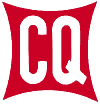We always get a number of emails after the contest complaining about how close USA stations get to the bottom of the US phone allocation on 20, 15, and 10 meters. Doug, K1DG, had done some research into this topic and arrived at the following conclusion.
Quoting from the FCC rules regarding signal bandwidth (in Part 2, not Part 97):
————-
PART 2–FREQUENCY ALLOCATIONS AND RADIO TREATY MATTERS; GENERAL RULES AND REGULATIONS–Table of Contents
Subpart C–Emissions
Sec. 2.202 Bandwidths.
(a) Occupied bandwidth. The frequency bandwidth such that, below its lower and above its upper frequency limits, the mean powers radiated are each equal to 0.5 percent of the total mean power radiated by a given emission.
————-
In a few other places, the FCC falls back on that “0.5 percent” standard. Or, if you prefer, -23 dB. In part 97, (97.3 (a) (8)) to be exact, amateur service signal bandwidths are defined at the 26 dB points. (I believe that is an error, where the FCC guy who wrote it did the 1% part in power terms, then did the .5 part in voltage terms).
My conclusion from this is that on USB, you are OK at 500 Hz inside the band. 600 Hz is real safe. Closer than 500 Hz is hard to justify, due to the compromised third-order distortion performance of most ham “linear” amps.
How to measure. Record the mean S-meter reading right there on 21200.6 USB, then switch to LSB and set the dial on the radio to 21200.0 and record the mean S-meter reading there. If the difference is 26 dB the transmission is legal according to FCC rules in the Code of Federal Regulations, Title 47, Part 2, Section 2.202 paragraph (a), and the tighter rules for hams at 47CFR97.3(a)(8).
The above applies only to those operating under the jurisdiction of the USA Federal Communications Commission. Other governments may have their own interpretation to what is in the band or not.
